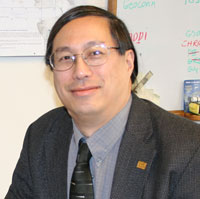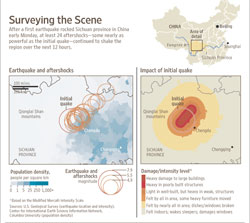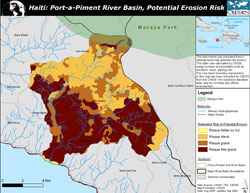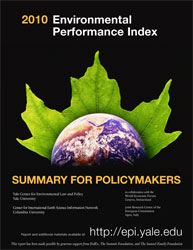|
|
 |
In just a bit more than five years, the world has experienced an unprecedented string of “megadisasters.” These events were the result not only of the awesome power of earthquakes and cyclones but were also due to the high exposure and extreme vulnerability of populations around the world to a range of hazards. At the end of 2004, the South Asian tsunami shocked the world with its sudden devastation of many densely settled and poorly protected coastal areas. In 2005 and 2008, we witnessed the suffering of hundreds of thousands affected by major earthquakes in Pakistan and China, compounded by poorly constructed schools, dams, and other structures. Hurricane Katrina in 2005 gave us an object lesson about the potential for disaster even in a highly developed country, if governments and citizens fail to prepare for hazards and fail to respond effectively to them. Then Cyclone Nargis in 2008 provided an even more devastating example of the vulnerability of disenfranchised populations worsened by a rogue government. And now we have begun the year 2010 with damaging earthquakes in both Haiti and Chile—the first inflicting much more death and destruction than it should have and leaving a massive and continuing humanitarian crisis in its wake.
 |
Maps of the 2008 China earthquake |
These disasters underscore the important roles population location and physical and social vulnerability play in amplifying the risks of natural hazards around the world. We know that population has been growing much faster in coastal areas than elsewhere, often accompanied by accelerated stress on coastal ecosystems and marine resources. Rapid urbanization is occurring in many areas prone to earthquakes, landslides, and/or floods with little or no attention to building codes, protective works, land degradation, or land use restrictions. Poverty continues to force millions to live in substandard housing in environmentally marginal areas with few resources to draw upon when drought, floods, and other hazards strike.
Unfortunately, the scientific community still has limited understanding of the human and environmental factors that can increase or decrease risks of both large and small disasters. One constraint is data, even though many of us in this community have worked for years to develop and improve georeferenced data collections on population distribution, hazards, and poverty. Major improvements are still needed in resolution and time span and in the types of data, e.g., on physical infrastructure, social response capacity, and risk perception and communication. We also lack sufficient ability to translate data into useful forms for disaster mitigation, land use planning, ecological restoration, sustainable development, and other applications.
How best to repair and restore both environmental and human systems damaged by extreme events, human-induced stress, and/or long-term environmental changes—this is a question the scientific community has spent relatively limited time and effort studying. Only recently have international organizations such as the International Council of Science (ICSU) and the European Science Foundation (ESF) begun to focus greater attention on this aspect of environmental sustainability, for example, through the ICSU Earth System Visioning Process and the ESF’s
 |
Potential erosion risk in Port-a-Piment River Basin area of Haiti |
Responses to Environmental and Societal Challenges for our Unstable Earth (RESCUE) initiative.Over the past several years, CIESIN deputy director Marc Levy has been working with the Post-Conflict and Disaster Management Branch of the United Nations Environment Program (UNEP) to develop an integrated approach to environmental restoration and development in areas that have suffered from conflict. On the day that the earthquake hit Haiti in January, he and CIESIN program coordinator Alex Fischer were in Port-au-Prince, meeting with UNEP staff to plan the launch of the Haiti Regeneration Initiative. They (and we) are fortunate that they survived the earthquake and were able to return quickly to New York, where they are in the process of adapting plans for the Initiative to address the even more pressing needs now in Haiti. CIESIN has taken a lead role in both Earth Institute and international activities to support recovery and reconstruction in Haiti, assisting UN agencies, the Haitian government, and aid organizations with their data and information needs.
 |
CIESIN continues to address an important niche at the intersection of the natural and social sciences, developing new data, knowledge, and capacities for interdisciplinary research and policy applications. CIESIN remains active in a myriad of issues and initiatives, ranging from improving soil and road network information in Africa to exploring potential links between climate change and migration; from detecting emerging infectious diseases in the tropics to sharing and preserving data on the world’s polar regions; and from assessing progress in meeting the Millennium Development Goals in villages throughout Africa to developing policy-relevant indicators of environmental performance at national and subnational levels. This year greater numbers of CIESIN staff members have also taken on teaching assignments throughout Columbia University, addressing interdisciplinary issues and research methods in policy analysis, health, engineering, and sustainable development at both the graduate and undergraduate levels.
As CIESIN’s third decade begins, along with my fourth year as director, I look forward to CIESIN’s continued efforts and impact in research, education, data management, and policy support. We hope that our efforts will inspire and support actions to reduce damage and suffering from future hazard events, large and small, and to tackle problems of climate change, poverty, conflict, and sustainable development from local to global scales.
Bob Chen
March 8, 2010
|
This page last modified: Mar 08, 2013
|

